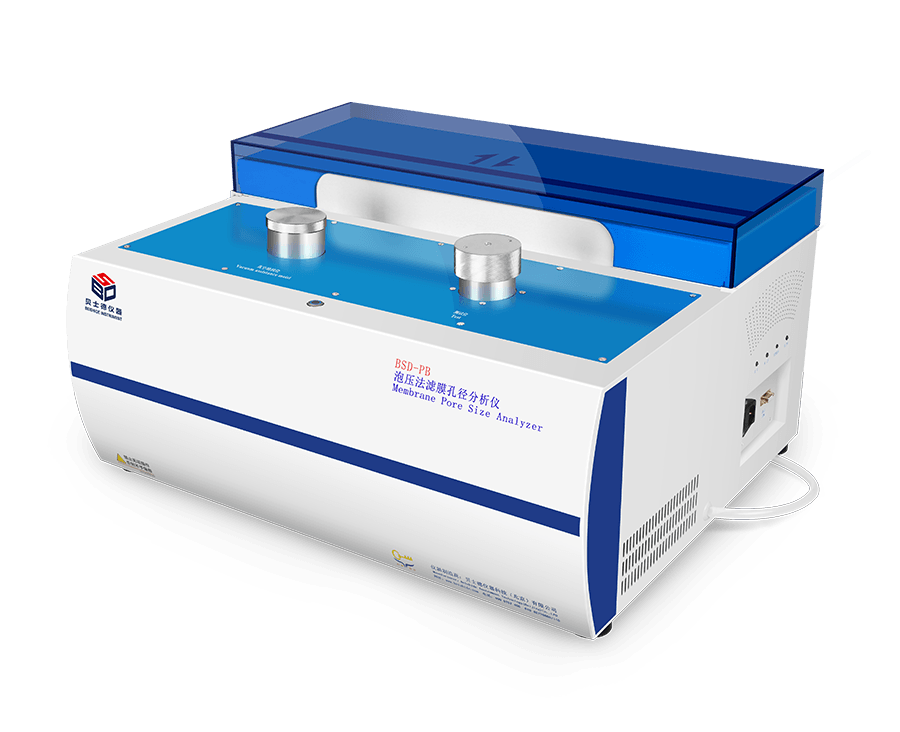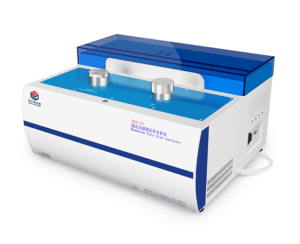Home / Blog / Membrane Porosity and Its Impact on Mass Transport and Permeation Efficiency
Membrane Porosity and Its Impact on Mass Transport and Permeation Efficiency
20 10 月, 2025From: BSD Instrument

1. Introduction
2. Defining Membrane Porosity: Structural Parameters and Classification
2.1 Fundamental Definitions
2.2 Key Structural Parameters
Pore Size Distribution (PSD): The range and frequency of pore diameters (from nanometers to micrometers) determine which species can physically pass through the membrane. For example, MF membranes (pores > 0.1 μm) retain bacteria but allow water and dissolved salts to pass, whereas ultrafiltration (UF) membranes (pores 0.01–0.1 μm) separate macromolecules. Pore Connectivity: The degree to which pores are interconnected influences the accessibility of transport pathways. Highly connected pores facilitate continuous flow channels, reducing flow resistance, whereas isolated pores create dead-end spaces that limit permeation. Tortuosity (): A dimensionless parameter describing the deviation of pore pathways from a straight line (ideal case, ). Higher tortuosity (e.g., in dense organic membranes) increases the effective path length for transport, thereby reducing flux. Tortuosity is inversely related to the membrane’s structural order (e.g., anisotropic membranes like asymmetric polymeric films exhibit lower tortuosity in their porous support layer).
2.3 Classification of Membranes by Porosity
Microporous Membranes (pores < 2 nm): Dominated by Knudsen diffusion or molecular sieving (e.g., zeolite membranes for hydrogen separation). Mesoporous Membranes (2 nm < pores < 50 nm): Balance between size exclusion and surface interactions (e.g., metal-organic frameworks [MOFs] for CO₂ capture). Macroporous Membranes (pores > 50 nm): Primarily governed by convective flow (e.g., ceramic MF membranes for particulate removal).
3. Theoretical Foundations: How Porosity Influences Mass Transport
3.1 Knudsen Diffusion (Dominant in Microporous Membranes)
3.2 Molecular Sieving (Size-Exclusion Mechanism)
3.3 Viscous Flow and Poiseuille’s Law (Macroporous Membranes)
3.4 Solution-Diffusion Model (Dense Membranes)
4. Practical Impacts on Permeation Efficiency
4.1 Flux (Permeation Rate)
Fouling: Larger pores trap more foulants (e.g., colloids, organic matter), reducing long-term flux. Mechanical Weakness: High porosity often correlates with lower tensile strength, limiting membrane durability.
4.2 Selectivity (Separation Efficiency)
Size Exclusion: Narrow, uniformly distributed pores (low tortuosity) enhance size-based separation (e.g., RO membranes with dense, defect-free matrices reject > 99% of NaCl). Competitive Transport: In mixed-matrix membranes (e.g., polymers blended with nanoparticles), optimized porosity ensures balanced solubility and diffusion for target species.
5. Design Strategies for Optimizing Porosity
5.1 Material Selection
Polymers: Phase inversion techniques (e.g., immersion precipitation) adjust porosity by tuning solvent/non-solvent ratios (e.g., cellulose acetate RO membranes with 40–60% porosity). Ceramics: Sintering temperature and particle size distribution govern pore formation (e.g., alumina MF membranes with 70% porosity and 0.1–10 μm pores). Composites: Hybrid materials (e.g., graphene oxide-polymer blends) introduce hierarchical porosity (macropores for flow + nanochannels for selectivity).
5.2 Fabrication Techniques
Template-Assisted Synthesis: Using sacrificial templates (e.g., polystyrene beads) to create ordered pore arrays (e.g., mesoporous silica with 2–5 nm pores). Electrospinning: Produces nanofibrous membranes with high porosity (> 80%) and interconnected pores for air filtration. Anodization: Forms self-organized nanopores (e.g., TiO₂ membranes with 20–100 nm pores for photocatalytic applications).
5.3 Post-Treatment
Chemical Etching: Expands pore size (e.g., increasing MF membrane porosity from 60% to 75% via NaOH treatment). Compression Molding: Reduces tortuosity by aligning polymer chains (e.g., enhancing dense membrane diffusivity).
6. Conclusion
Our Latest Blog & Articles
Stay updated with our latest news. Discover new product launches, innovative technologies, and upcoming events. Join our community and stay informed about all things lab equipment.
-
27 10 月, 2025
Cheap and Efficient Adsorption-Desorption Systems for Water Pollution Control in China
-
25 10 月, 2025
Gas Adsorption Analyzer Technologies: Advancements and Future Trends
-
23 10 月, 2025
Micropore and Mesopore Analysis for Improving Gas Storage and Separation Efficiency
-
20 10 月, 2025
Membrane Porosity and Its Impact on Mass Transport and Permeation Efficiency





